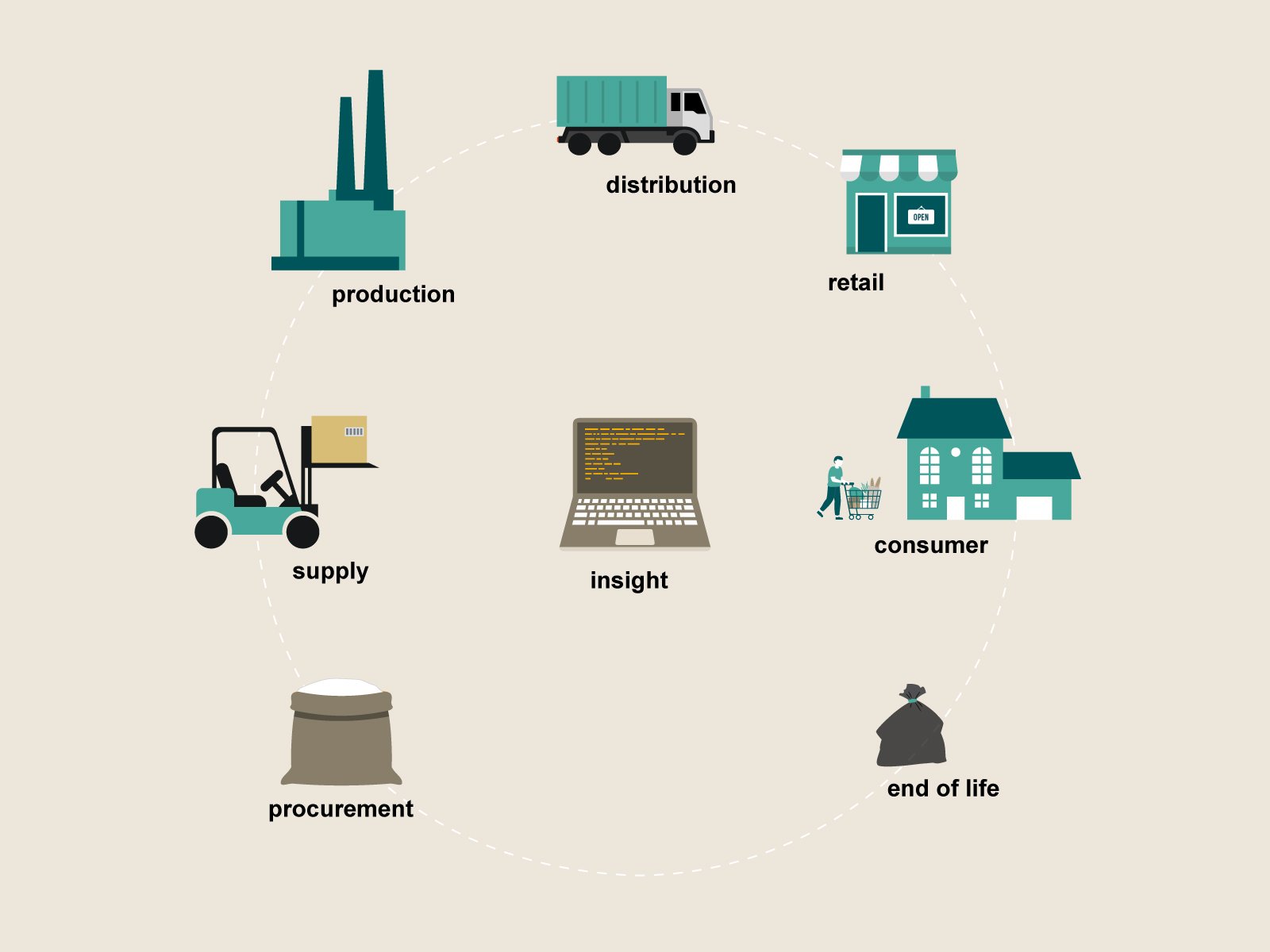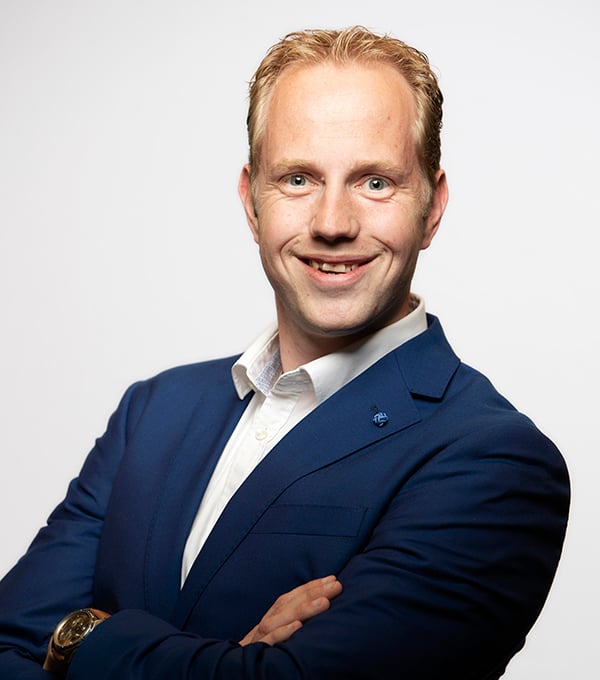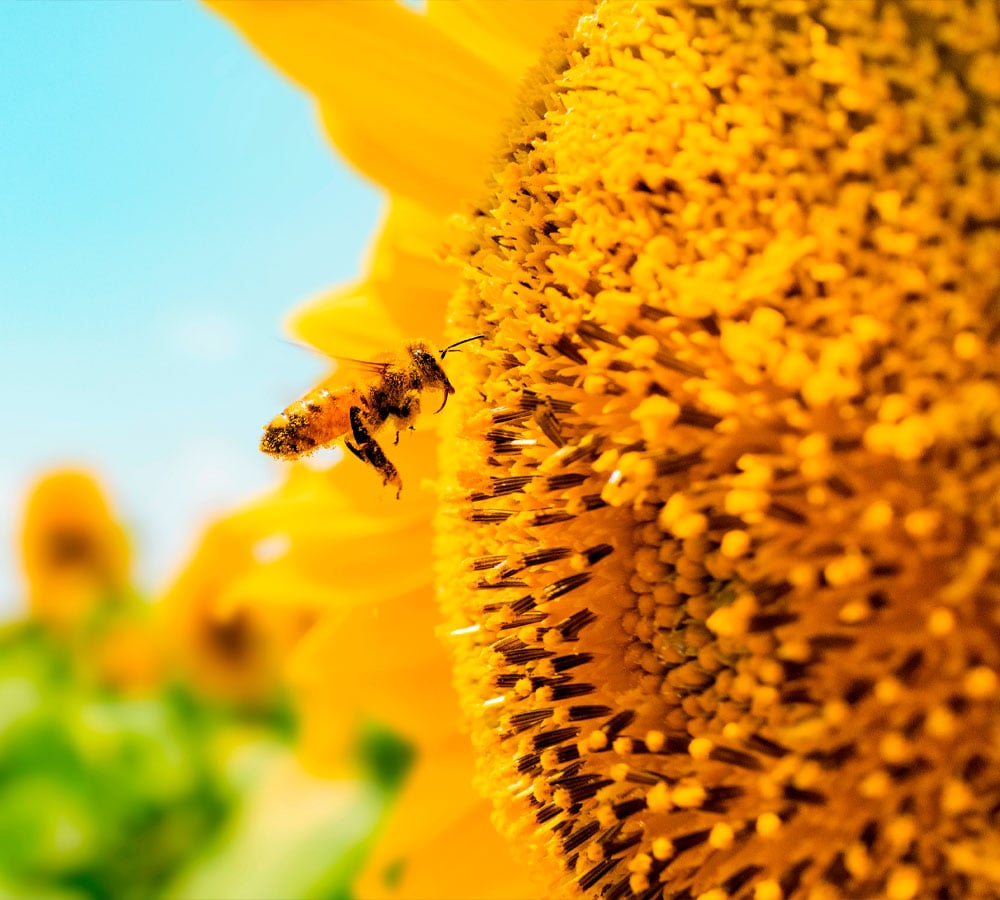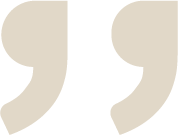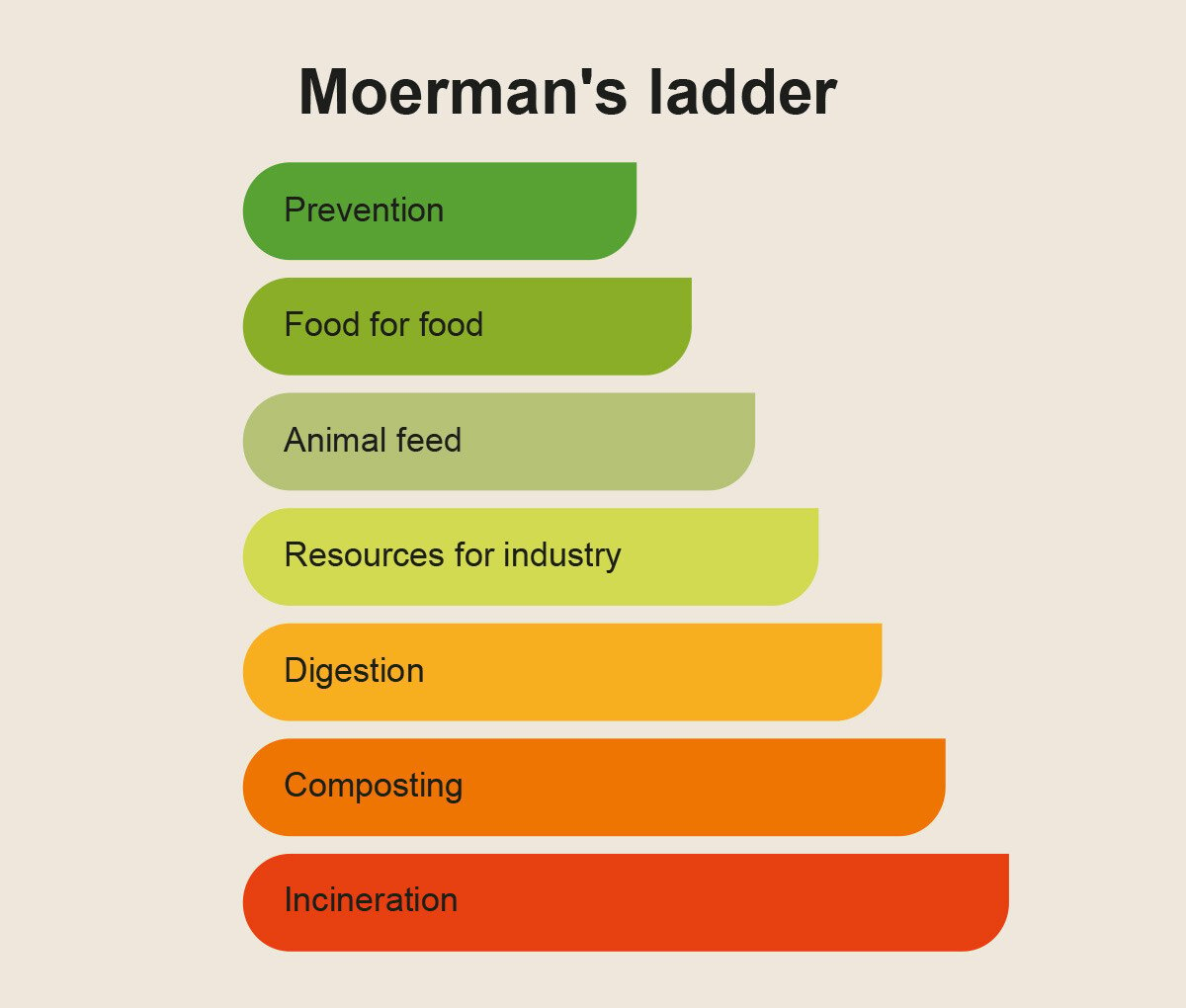Moerman's Ladder is a roadmap for circular food management. The purpose of this ladder is to prevent food waste and use raw materials more efficiently. In other words, the model is intended to prevent food from becoming waste.
For your organization, the model is a first indication of how sustainably you handle food and raw materials. To then set sustainability ambitions and goals, on the way to circularity. Below you will find further explanation of Moerman's Ladder.
The 7 steps of Moerman's Ladder
The ladder consists of 7 steps, and looks as follows:
- Prevention (most desired)
- Human consumption (food for food)
- Animal feed
- Recources for industry
- Digestion
- Composting
- Incineration (least desirable)
We now cover each step briefly, including examples.

1. Prevention
Preventing food waste is most desirable. This can be done in several ways:
- Production: not producing more food than the market demands.
- Distribution: ensuring food does not spoil during transport or after delivery.
- Shelf life: keeping food fresh longer through better packaging techniques and preservation.
- Reducing food loss: during harvest, transport and storage.
2. Food for food (human consumption)
Often food is still perfectly suitable for people, but can no longer be sold due to laws and regulations. Then donation is possible: to food banks or organizations that help people in need. Sometimes food leftovers can be (re)processed so that people can eat it safely. Think of processing into soups and sauces.
3. Animal feed
When food is no longer suitable for humans for whatever reason, it is often still suitable as animal feed or other uses in animal feed, for example.
4. Recources for industry
Food scraps that are no longer fit for human consumption often still contain valuable components. These can be processed into or into new products for various industries. For example:
- Vegetable proteins (from residual streams of meat processing)
- Oil (from residual streams of fruit and vegetable processing)
- Fiber for textiles or paper (from residue streams from grain processing)
- Lubricant (from residues from meat processing)
- Building material (from agricultural waste streams)
- Feedstock for chemical products (from residual streams of the food industry)
5. Digestion
Once food is organic waste that cannot be reused? Then it can still be fermented in 2 ways:
- To biogas, so it can serve as an energy source
- To digestate, so that it can serve as a fertilizer
6. Composting
Food scraps can also be processed into fertilizers through composting.
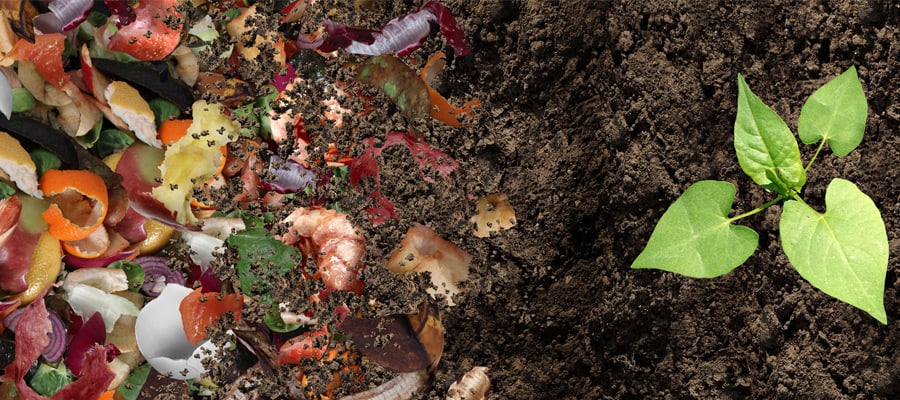
7. Incineration
Burning food is the least desirable. Energy and valuable raw materials are lost. So this is only an option when there really are no other options.
What can Moerman's Ladder do for you?
Moerman is a very good first indicator for processing your food waste streams. Once you know where you are on the ladder for each residual stream, you can then:
- Optimize your food flows
- Reduce food waste
- Contribute to a circular economy
So at what level(s) are you already doing well? Where is there room for improvement? Previously, the higher you were on the ladder, the more costs you saved. This is now unfortunately different. For example, fermentation (step 5) yields more than reusing food as animal feed (step 3). Nonetheless, the ladder remains a useful tool on the road to circular operations in terms of food.
Milgro and Moerman's Ladder
We have nearly 3 decades of experience in waste management and management. We help you climb Moerman's Ladder at your pace, on your way to full circularity.
We always look per waste stream what the right solution is for you. Therefore we make impact calculations (on the basis of LCA), with which we measure a processing method completely on energy, processing, transport, water, land use, etc. This enables you to make the right strategic decisions.
Stay informed
Stay up to date on all new developments? Follow us on LinkedIn or Instagram. Or subscribe to the newsletter. Are you curious about what Milgro can do for your operations and waste process? Contact us








